Having owned a string of performance cars, Mark Brown wasn’t imagining a battered Lupo as his next daily drive. 12 years, an R32 swap and two hand-fabricated rebuilds later, he can’t imagine ever letting his modified VW Lupo go…
By his own admission, Mark Brown isn’t someone you’d naturally pair with Volkswagen’s smallest-ever city car. The cutesy Lupo’s compact and eye-poppingly pink bodywork feels like an unlikely fit in a car-owning history spanning everything from turbo’d 1980s hot hatches to Japan’s best-known performance machinery, and unique because it’s the only one that’s stuck around. Show-stealing styling and the mechanical heart of a Golf R32 make a pretty strong case for not parting ways with it, but the roots of this long-term relationship run much deeper.
“A lot of people ask me why I’ve kept the car all these years,” he tells us. “It’s a cool car, but it’s more of a sentimental thing. When I got this car, I’d just lost my job and I had absolutely squat all. Now, 12 years later, I’ve got two kids, we’re comfortable, and it shows me what I’ve gained. It’s not the fact it’s had money spent on it, because I can look past that, it’s that it’s come a long way and it’s the only thing I’ve been able to keep.”
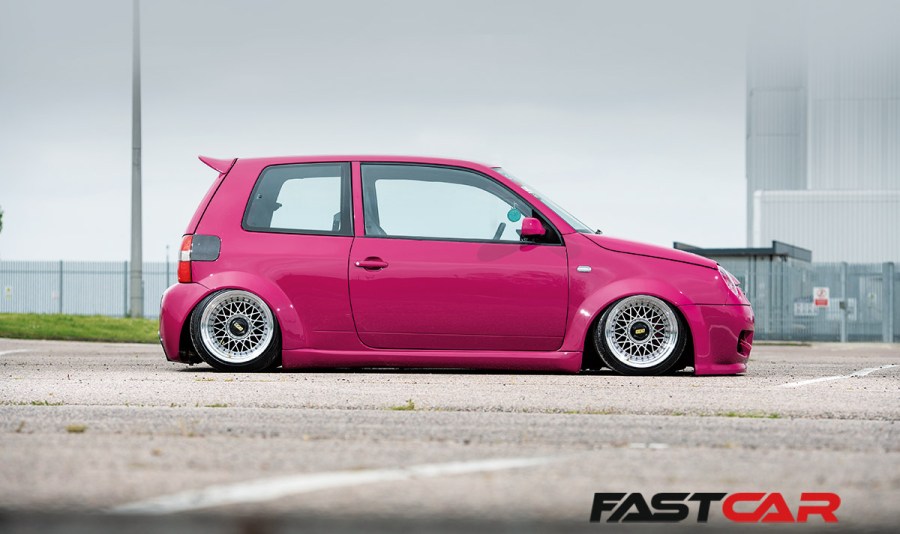
Mark’s obsession with cars
Car culture was never likely to pass him by. As a young teenager during the 1990s and with two older brothers who could both drive, Mark had his head buried in modified car magazines while his schoolmates were collecting football cards, and it led to an early start building his first project. By age 13, he had a Mk3 Fiesta taking shape on the driveway and, having ditched the L plates a few years later, he wasted no time getting involved with Southend’s early-2000s cruise scene. A day job working in a local bodyshop was the perfect fit, paying for a long list of progressively more powerful (and rarely standard) daily drivers.
Of course, life has a habit of throwing spanners in the works and, in 2010, Mark and his partner Dionne suddenly found themselves simultaneously out of work with an urgent need to cut their outgoings. The Bentley-wheeled Mk4 Golf he had been driving shifted from a cherished project car to a financial burden overnight – and it was an obvious, if not easy, way to save some money. It’s ironic looking back, but the Lupo started out as a bit of a grudge purchase, he says.
“Some lads got in touch and asked if I’d like to part-ex the Golf. They turned up in this 1.4-litre Lupo in British Racing Green, lowered on a little set of alloys and with a tow bar on the back. Nothing special. We took it in part ex and used it for a while where we were living at the time. It wasn’t a performance car, and it had seen better days. They hadn’t really looked after it.”

Issues with the VW Lupo
Unfortunately, the result of that neglect didn’t take long to come to the surface. Small block Volkswagen gearboxes have a reputation for being fragile and, after two wrecked transmissions within the space of a few months, the Lupo wasn’t winning much favour. Still out of work and now committed to some form of financial pain to get back on the road – either cutting his losses and weighing it in as scrap or pouring money into repairs – Mark focused on the silver lining of his unwelcome predicament instead. What’s the point replacing like with like?
VR6 swap plans for the modified VW Lupo
“The VR6 swap was something for us to do until we found work,” he explains. “I thought about putting a Honda engine in it – I used to have a Type R and thought that would be cool in a Lupo – but I was sifting through eBay and Facebook and found a Mulberry Mk3 VR6 for £300. I hadn’t owned or driven a VR6 but I had heard one at a show and it sounded good. It wasn’t really about the speed… I could afford it, and that’s what came up.”
Squeezing a bulky engine into an undersized shell is no small feat, but this one had the added challenge of an incredibly tight budget. The Lupo took shape in an empty corner of a friend’s workshop between sessions searching for jobs, funded by whatever money Mark and Dionne could pull together and motivated by a mutual need to stay busy. It’s as tight a fit as you’d expect, requiring a full set of custom mounts, notched chassis rails and plenty of missing metalwork behind the grille, but space wasn’t the biggest headache. Splicing Lupo and Golf wiring into a single working loom, and learning as he went along, was a sanity test that he isn’t keen to repeat.
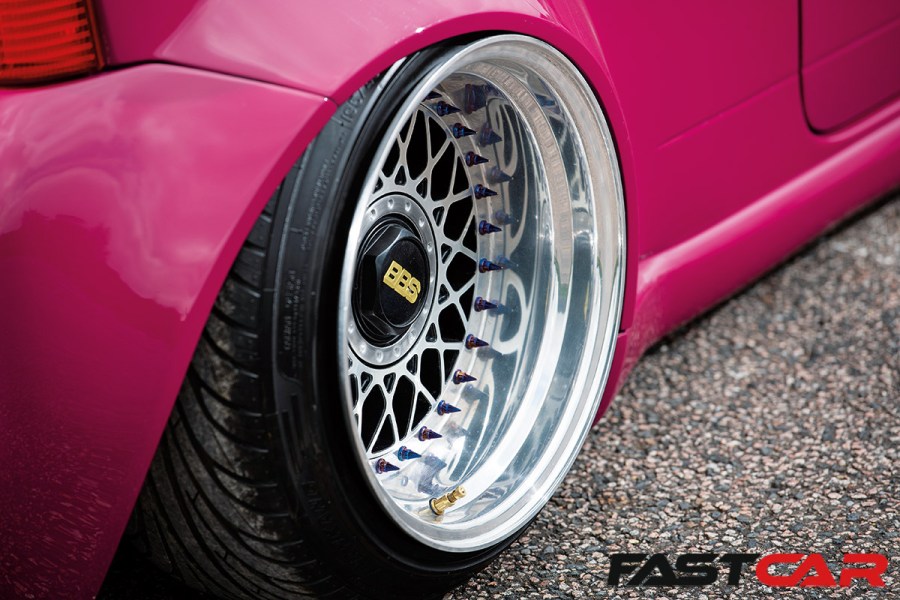
Brakes, wheels and paint
With more than double the factory power on tap, the rebuild didn’t stop once the new engine rumbled back into life, and the modified VW Lupo was far from co-operative on that front too. Non-GTIs have caliper carriers attached to the hub, which left Mark tracking down four-stud Mk3 hubs and customising the wishbones to match before he could fit a Wilwood big brake kit. Inside, the rear bench was ditched for a custom air ride install, with more compact bellow airbags and modified spring cups on the rear beam to tuck its new wheels as far up into the lightly flared arches as possible. The daily had it’s first reinvention.
“Some people stick to their original colour when they do a lot of work to their car, but for the time you’ve spent on it you could just spend a bit more and have a full colour change. I painted it Porsche Peppermint Green then picked up some BBS wheels. The lips were quite small, so I bought new ones and built them on the dining table one Christmas while watching films on TV,” he tells us.
“They came out at 10.5 inches wide at the front and 11.5 at the back, and when we took them out to the car there was no way they’d fit. I’d already painted the shell and didn’t want to go backwards, so the quickest way without doing a heavy amount of work was buying bolt-on arches, trimming them a bit and painting them to match. Not a lot of people saw it, but that’s how it was originally.”
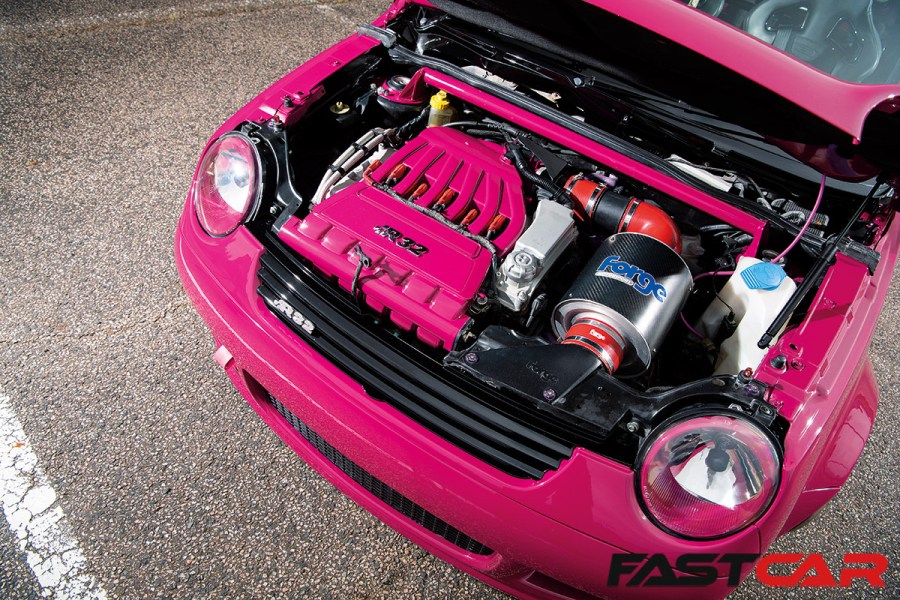
Golf R32 engine swap for the modified VW Lupo
By this point the modified VW Lupo had retired from daily driver duty and wasn’t the only project vying for Mark’s attention. Among the potential distractions, he’d picked up a rough two-owner Corrado G60 for £1,100 having made a lucky winning bid, then put the restoration on the backburner while paying work got in the way. Word got around quickly, offers became increasingly tempting, and one of them had the makings of a good fit – an R32 engine from a parted-out project car, complete with a VR6 five-speed gearbox and standalone management. Besides being an easy-ish way to squeeze more power into the Lupo, an engine would take up less room in the garage while it was waiting to be fitted. As a straight swap, that extra power owed him just over a grand. Bargain.
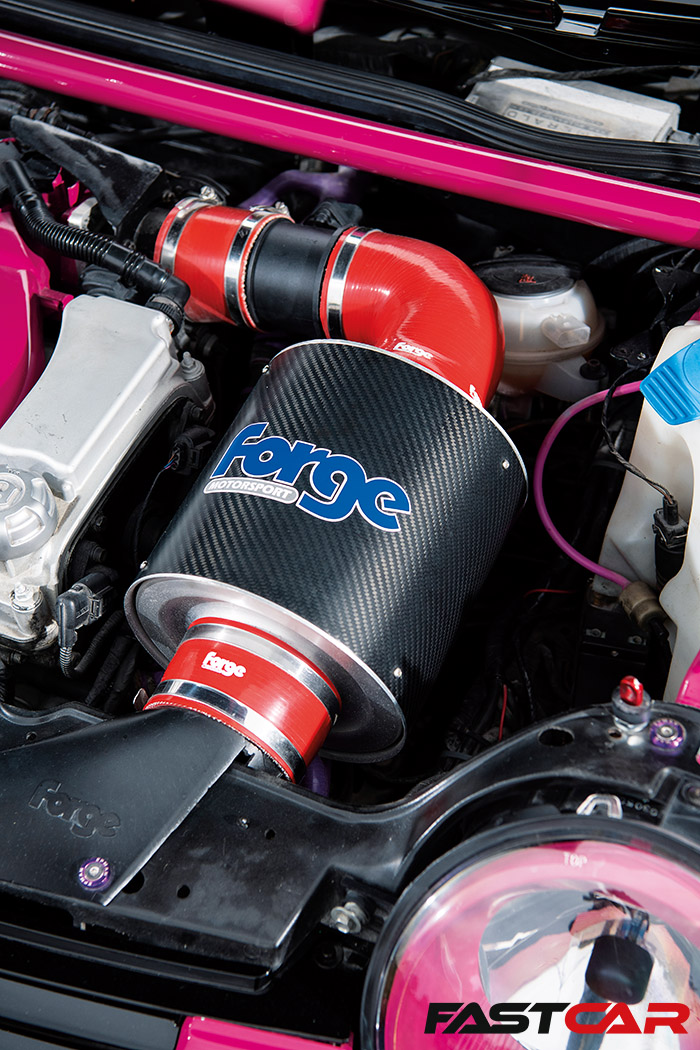
Most of the hard work had already been done. With an identical block, the swap re-used its predecessor’s mounting points and a little extra trimming made room for the larger inlet manifold and head. Having wrestled with a rat’s nest of wiring with the original swap, the standalone system simplified the R32 swap to only a handful of connections – and a set of Defi digital gauges – to plumb it into its new home.
The results, he says, smiling, were predictably violent. “A Lupo only weighs about 900kg, so with just shy of 300hp it’s lethal. You can’t just plant it in second, third or fourth or it’ll throw you into the ditch. You’ve got to be going along and have a bit of a cruise first. I don’t use it enough to lose the novelty of the noise and the speed – if I don’t drive it for a few weeks it feels like an absolute beast.”
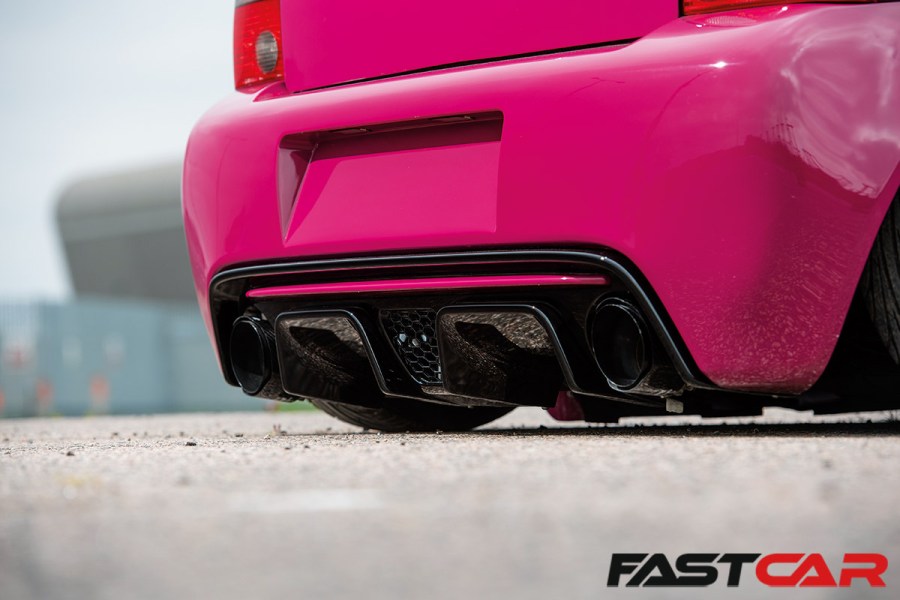
Sourcing parts from unsuspecting donors
Now running his own bodyshop, Mark could have been excused for pausing his own projects at this point, but it didn’t shape up that way. Having gone through a trial-and-error build the first time around, he’d been pooling inspiration for another reinvention, eventually freeing up enough diary space last Christmas to bring them to life. None of what you see here is available off the shelf; six inches of extra arch at each corner, now blended into the bodywork with the help of Lupo GTI bumper sections. A genuine Mk4 R32 front bumper gave up its intakes – now shortened for the much narrower body – while the rear diffuser is from a Abarth 595. Shortened Astra VXR side skirts run down each side, while the hatchback spoiler was lifted from a Honda Civic.
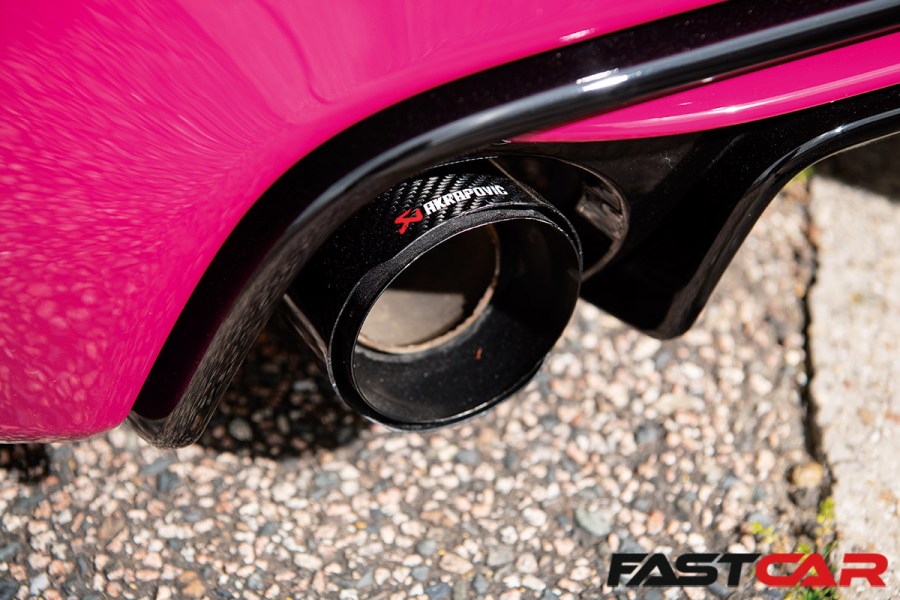
Naturally, Peppermint Green was never part of the new look. “I like lairy colours,” he laughs. “Originally I had my eye on this pink from a Plymouth Barracuda, then I saw a Rubystone Red 911 on the Meguiars stand. It’s a weird colour, and some cars look almost fuchsia, but mine is a pink pink, it’s more of a posh pink than a baby pink, but it goes well with the car.
“It’s like wheels; if you put the wrong wheels on a car then it ruins it. I can get away with it because it’s lairy anyway. I don’t think anyone realises how much faffing and work and plastic welding was involved. Once it’s all painted you can’t see the graft that’s gone into it. My mates thought I was off my nut, because it was hours and hours of work.”
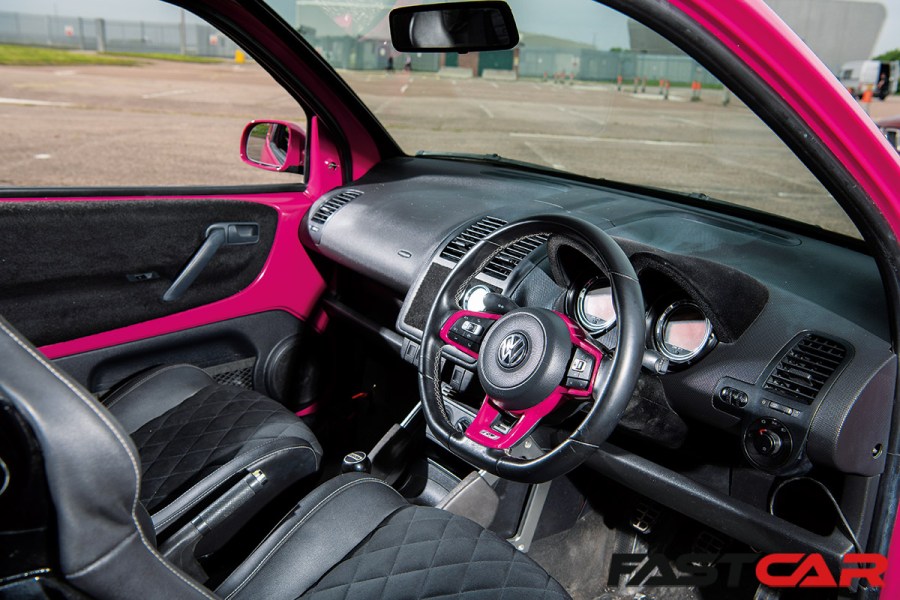
Interior modifications for the VW Lupo
The knock-on effect of tidying everything else up was the interior had started to become a weak point in the overall look. Lupos have enough exposed metalwork inside to make a tear-down necessary, and it was an opportunity to take the build those last few yards. The Corsa VXR Recaros were a bargain compared to similar seats, freeing up some budget for Jeff Wilks Kustom Trim to re-work them for their new home. Behind them, the false floor hides most of the air ride hardware, now only the seamless floating tank and hand-shaped air lines on show. It’s plush, but an environment heavily focused on the sensory assault delivered by its oversized powertrain.
“I haven’t even got a radio, just the gauges,” he points out. “My friends always ask how I can drive for two hours because it’s loud, but I’ve got used to it. I’ve got two girls and they come to the shows with me – they take turns, obviously, because it’s only got two seats – but they’ve been around cars since they were little, so they’re fascinated. So yeah, they now get enjoyment out of the car as well.”
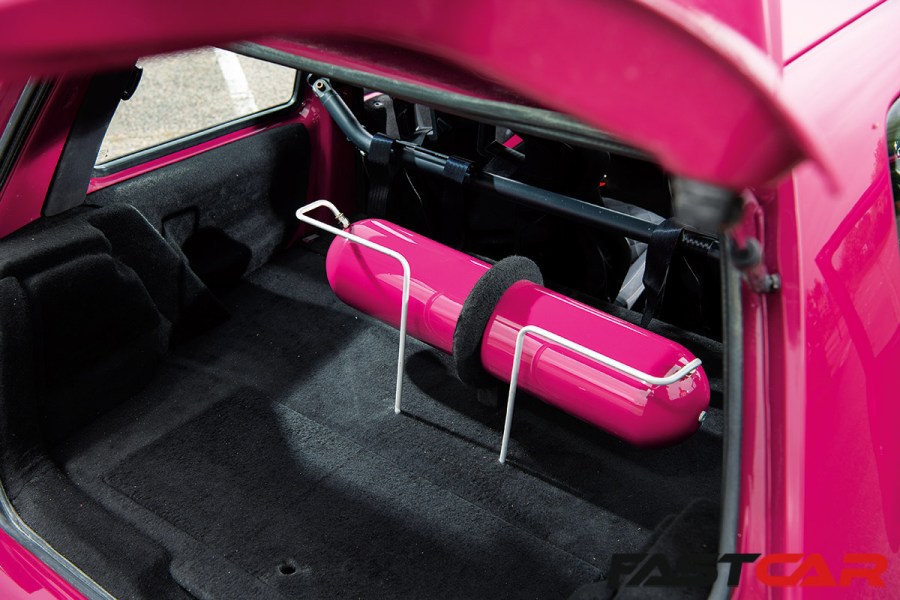
What’s next for the modified VW Lupo?
Of course, Mark hasn’t kicked the habit of getting hands-on with this project just yet. Having built another R32-swapped Lupo for a friend, he admits there’s a nagging urge to build a more road-focused stablemate for his own. It’ll take second place to the next stage in this car’s ongoing evolution, though. Since our shoot, he’s added a Coolerworx race shifter and started gathering the parts for a turbo conversion. This isn’t pie-in-the-sky stuff, he’s bought parts, mocked it all up – and yes, it does fit. Just.
“Some people say a project is always a project, it’s never done,” he laughs. “My missus always says, out of any car, she’d never make me sell the Lupo. As much as she gets the hump with what gets spent on it, she knows the score. She’s been here since I’ve had the car and knows the ups and downs. Most people don’t see the hard work that’s gone into it, but once you get to the end it’s all about the joy of making something for yourself.”
And, in that, you get a sense of how perfect a pairing he is with this re-imagining of Volkswagen’s smallest ever city car. Compact, cute and eye-poppingly pink, this six-cylinder, hand-built bruiser has evolved into as much of an adrenaline rush as the rest of Mark’s enviable car-owning history. Factor in a little sentimentality, and we reckon those are solid foundations for turning this long-term relationship into a life-long partnership.
Words: Alex Grant. Photos: Ade Brannan.








